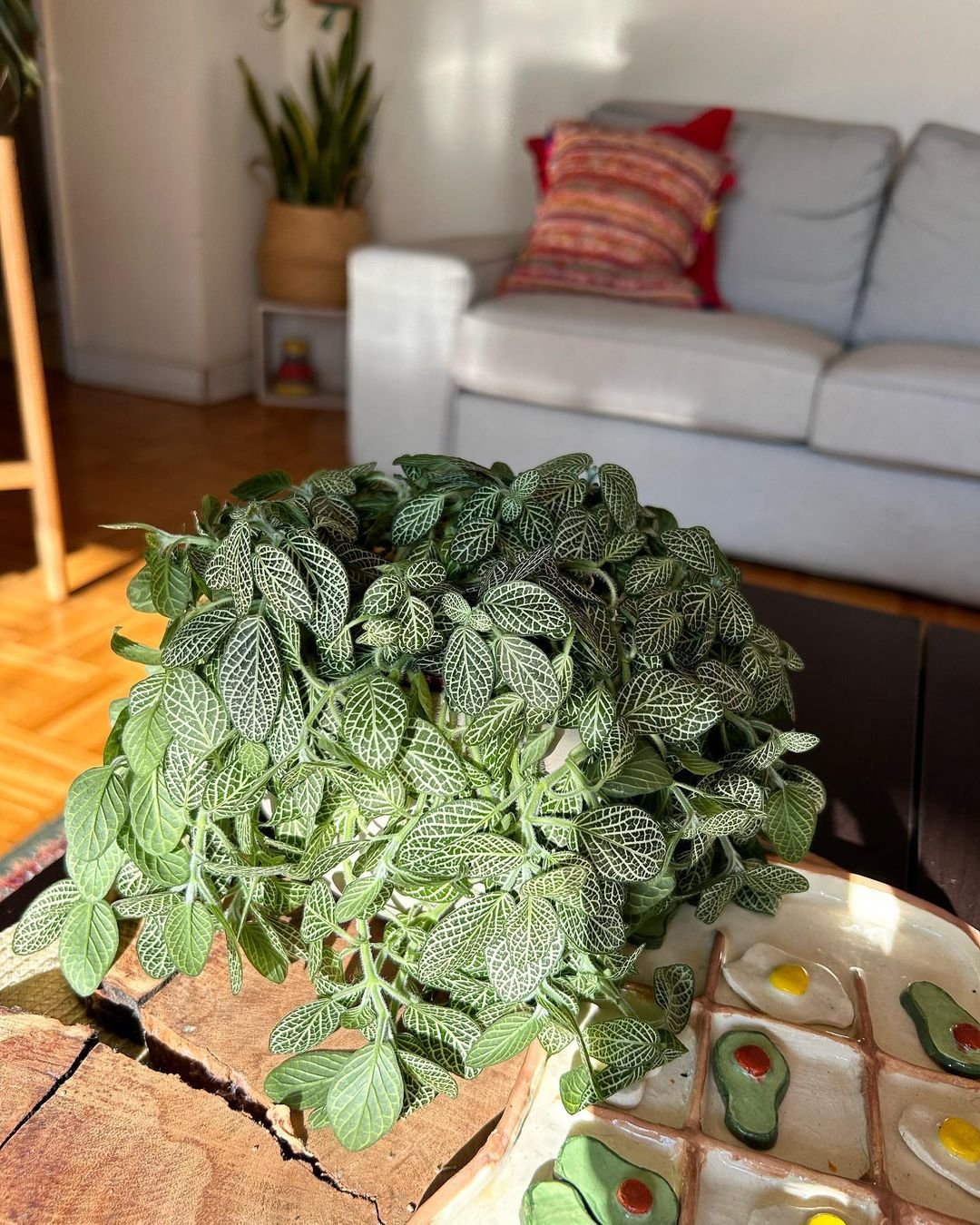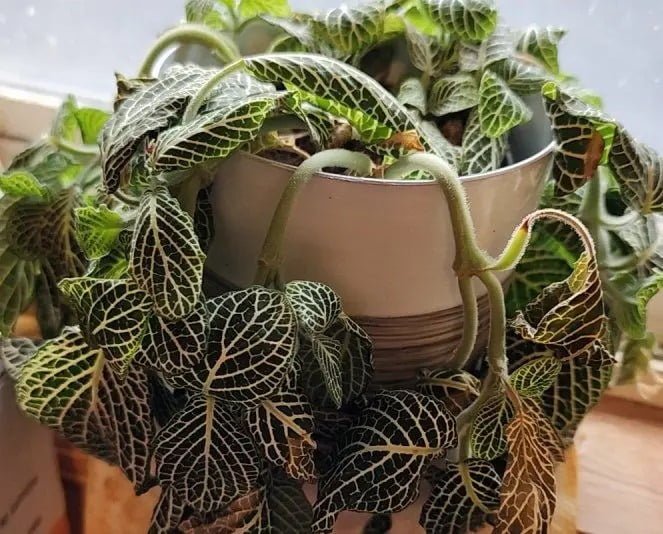Discover the allure of the Nerve Plant and unlock the keys to its successful cultivation with this detailed care guide. From watering techniques to lighting requirements and nutrient needs, explore invaluable insights to ensure your striking plant flourishes indoors.
The Nerve Plant, scientifically known as Fittonia, is a true gem in the world of houseplants. With its vibrant, veined foliage and compact growth habit, this tropical beauty has captured the hearts of plant enthusiasts worldwide. However, like any plant, the Nerve Plant requires specific care to thrive and maintain its captivating appearance. In this comprehensive guide, we’ll unveil the secrets to cultivating a healthy and vibrant Nerve Plant, ensuring it becomes a cherished addition to your indoor plant collection.
Understanding the Nerve Plant

Here’s a short information chart for Nerve Plant:
| Attribute | Information |
|---|---|
| Botanical Name | Fittonia albivenis |
| Plant Type | Perennial herb |
| Soil Type | Well-drained, peat-based soil |
| Color Varieties | Green leaves with white, pink, or red veins |
| Zones | 11-12 (USDA Hardiness Zones) |
| Exposure | Low to bright indirect light |
| Bloom Time | Rarely flowers indoors; small, inconspicuous flowers |
| Height/Spread | 3-6 inches tall / 12-18 inches wide |
Before delving into the care essentials, let’s explore the unique characteristics of this captivating plant:
1. Origins and Background: The Nerve Plant is native to the rainforests of Peru, where it thrives in the warm, humid understory beneath the canopy of towering trees.
2. Plant Characteristics: This evergreen perennial features striking, oval-shaped leaves adorned with intricate veins that range in color from deep red to pink or white, depending on the cultivar.
3. Growth Habits: The Nerve Plant is a compact grower, typically reaching heights of 6-12 inches, making it perfect for terrariums, dish gardens, or as a vibrant groundcover in indoor settings.
4. Varieties: While the classic Nerve Plant (Fittonia albivenis) is a standout, there are several cultivars available, including the striking ‘Red Angel’ and the delicate ‘Frankie.’
Watering Requirements

Proper watering is crucial for maintaining the health and vibrancy of your Nerve Plant. Here are some essential tips:
1. Soil Moisture: The Nerve Plant prefers consistently moist, well-draining soil. Never allow the soil to completely dry out, as this can cause the plant to wilt and the leaves to become crispy or discolored.
2. Watering Frequency: During the active growing season (spring and summer), water your Nerve Plant when the top inch of soil becomes slightly dry. In cooler months, reduce watering frequency to prevent oversaturation.
3. Proper Drainage: Ensure your Nerve Plant is planted in a well-draining potting mix or container with ample drainage holes to prevent waterlogging, which can lead to root rot and other issues.
4. Water Quality: Use room temperature, distilled or filtered water for your Nerve Plant. Tap water containing high levels of chlorine or minerals can damage the delicate foliage over time.
Lighting Requirements

The Nerve Plant thrives in bright, indirect light, making it an ideal choice for homes and offices with varying light conditions:
1. Ideal Light: Provide your Nerve Plant with bright, filtered sunlight or dappled shade. East or north-facing windows are often perfect for achieving the right light balance.
2. Low Light Tolerance: While the Nerve Plant can tolerate low light conditions for a short period, prolonged exposure to insufficient light can cause the plant to become leggy and the foliage to lose its vibrant colors.
3. Direct Sunlight: Avoid exposing your Nerve Plant to direct, intense sunlight, as it can scorch the delicate leaves and cause discoloration or leaf drop.
4. Supplemental Lighting: If natural light is limited in your home, consider using grow lights or supplemental lighting to provide the necessary brightness for your Nerve Plant to thrive.
Nutrient Needs and Fertilization

Like any plant, the Nerve Plant requires essential nutrients to maintain its health and vibrant foliage:
1. Fertilizer Type: Use a balanced, water-soluble fertilizer formulated for houseplants or a diluted, all-purpose liquid fertilizer with a balanced N-P-K ratio.
2. Fertilization Schedule: Fertilize your Nerve Plant every two to four weeks during the growing season (spring and summer). Reduce fertilization frequency in the cooler months when growth slows down.
3. Dilution and Application: Follow the manufacturer’s instructions for dilution rates and application methods. Always water your plant thoroughly before and after fertilizing to prevent root burn.
4. Organic Options: If you prefer organic fertilizers, consider using compost tea, fish emulsion, or other organic plant food formulations designed for houseplants.
Humidity and Temperature

As a tropical plant, the Nerve Plant thrives in warm, humid environments:
1. Humidity Levels: Aim to maintain humidity levels between 50-70% for optimal growth and to prevent leaf discoloration or drying.
2. Humidity Techniques: Increase humidity around your Nerve Plant by using a humidifier, placing the pot on a pebble tray, or grouping plants together to create a microclimate.
3. Temperature Range: The Nerve Plant prefers temperatures between 65°F and 80°F (18°C to 27°C). Avoid exposing it to extreme temperature fluctuations or drafts.
4. Winter Care: In cooler months, reduce watering and avoid fertilizing to allow your Nerve Plant to semi-dormant until conditions become more favorable.
Pruning and Grooming

Regular pruning and grooming are essential for maintaining the compact, lush appearance of your Nerve Plant:
1. Pruning Frequency: Prune your Nerve Plant every few months, or as needed, to remove any damaged, discolored, or overgrown stems.
2. Pinching Back: Pinching back the stem tips can encourage bushier, more compact growth and promote new side shoots.
3. Shaping: Use clean, sharp scissors or pruning shears to shape your Nerve Plant according to your desired form, whether as a groundcover or more upright specimen.
4. Removing Spent Flowers: While not a prolific bloomer, the Nerve Plant may occasionally produce small, inconspicuous flowers. Remove these spent blooms to redirect the plant’s energy into foliage growth.
Propagation and Repotting

The Nerve Plant is incredibly easy to propagate, making it simple to expand your collection or share with fellow plant enthusiasts:
1. Stem Cuttings: Take 3-4 inch stem cuttings from healthy plants, removing the lower leaves. Place the cuttings in water or a well-draining potting mix, and they will quickly develop roots.
2. Division: For established plants, you can divide the root ball into sections and replant each division as a new plant.
3. Repotting: Repot your Nerve Plant every 1-2 years, or when it outgrows its current container. Choose a slightly larger pot with ample drainage holes and fresh, well-draining potting mix.
Pest and Disease Management

While generally hardy, the Nerve Plant can be susceptible to certain pests and diseases. Here’s how to identify and address common issues:
1. Spider Mites: These tiny pests can infest your Nerve Plant, leaving behind webbing and discolored leaves. Treat with insecticidal soap or neem oil, and isolate affected plants.
2. Root Rot: Overwatering or poor drainage can lead to root rot, causing wilting, discoloration, and eventual plant death. Improve drainage and allow the soil to dry out slightly between waterings.
3. Leaf Spots and Mildew: Fungal issues like leaf spots or powdery mildew can appear due to high humidity or poor air circulation. Improve ventilation and treat with a fungicide if necessary.
4. Environmental Stress: Extreme temperature fluctuations, low humidity, or inadequate lighting can cause your Nerve Plant to become stressed, making it more susceptible to pests and diseases.
The Nerve Plant is a true gem among houseplants, offering striking foliage, easy propagation, and adaptability to various indoor growing conditions. By following the guidance provided in this comprehensive care guide, you’ll be well-equipped to cultivate a vibrant and healthy Nerve Plant that will add a touch of tropical beauty to your indoor spaces.
Remember, patience, attention to detail, and a little experimentation are key when caring for any plant. With the right watering, lighting, humidity, and maintenance techniques, your Nerve Plant will reward you with its captivating veined leaves and lush, compact growth for years to come.